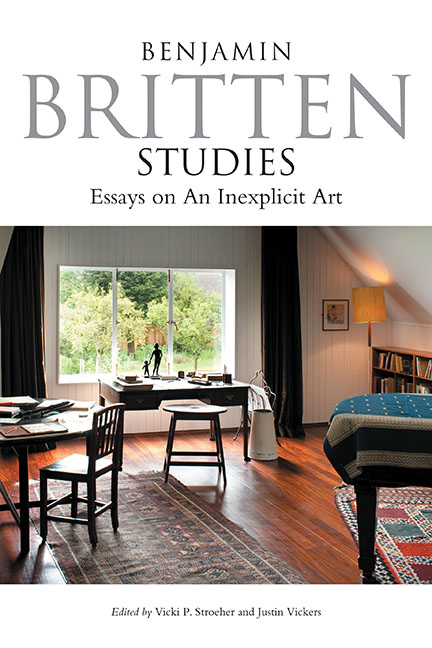Book contents
- Frontmatter
- Dedication
- Epigraph
- Contents
- List of Illustrations
- List of Musical Examples
- List of Tables
- Notes on Contributors
- Acknowledgements
- Bibliographic and General Abbreviations
- Editors’ Preface
- Introduction: Writing About Britten
- Part I Identity: Exile and Return
- Part II Britten and Intimacy
- 5 “Save Me From Those Suffering Boys”: Britten, John Ireland, and the Venerable Tradition of Uranian Boy-worship in England
- 6 Britten's (and Pears's) “Beloved”: Sacred Parlor Song, Passion, and Control in Canticle I
- 7 Notes of Unbelonging
- Part III Britten and His Craft
- Part IV Britten and Matters of Practicality
- Conclusion and Epilogue
- Works Cited
- Index
7 - Notes of Unbelonging
from Part II - Britten and Intimacy
Published online by Cambridge University Press: 25 October 2017
- Frontmatter
- Dedication
- Epigraph
- Contents
- List of Illustrations
- List of Musical Examples
- List of Tables
- Notes on Contributors
- Acknowledgements
- Bibliographic and General Abbreviations
- Editors’ Preface
- Introduction: Writing About Britten
- Part I Identity: Exile and Return
- Part II Britten and Intimacy
- 5 “Save Me From Those Suffering Boys”: Britten, John Ireland, and the Venerable Tradition of Uranian Boy-worship in England
- 6 Britten's (and Pears's) “Beloved”: Sacred Parlor Song, Passion, and Control in Canticle I
- 7 Notes of Unbelonging
- Part III Britten and His Craft
- Part IV Britten and Matters of Practicality
- Conclusion and Epilogue
- Works Cited
- Index
Summary
Death in Venice famously begins with an evocation of writer's block. Orchestral instruments mime the unfruitful pulsing of Aschenbach's brain. Britten creates the effect of slipped gears by confining each instrument to a single pitch, on which it hammers quietly in irregular bursts. The whole texture is rhythmically agitated but harmonically deadlocked. Furthermore, the instruments enter in pairs: two clarinets, two horns, two oboes. But each pair beats out conflicting rhythmic patterns. That is, the paired clarinets, for instance, do not mesh but chafe against one another in time, causing a kind of static blur. It's a masterful stroke – notes that twitch and go nowhere, that fail to blend. In this striking sonic image, Britten is drawing on a set of ideas for reconceiving texture which he had been developing continuously throughout his late period. Beginning in the early 1960s with Curlew River, Britten experimented with chamber textures for which no conductor would be required, in which interwoven lines took precedence over harmony as a structuring principle, in which temporal alignment between parts was flexible and casual rather than highly regulated, and heterophony acquired a special status. Heterophony – the rendering of a single melodic line as several slightly varied or asynchronous versions of the same line – is well known from traditional communal music-making, where individual singers might know a slightly different version of the tune, provide a personal embellishment, or momentarily fall behind in the beat. Heterophony also figures importantly in many non-Western traditions, such as the Far Eastern musics which exerted a strong influence on Britten in the 1960s and 1970s.
But there is more to be said about the motivations behind his recalibration of sonic material. Peter Evans has cautioned against exaggerating the revolutionary impact of Britten's encounter with music of the Far East, since “every technical innovation in [Curlew River] has precedents of a kind in Britten's earlier music.” Thus one can point to passages of relaxed temporal alignment between parts (marked senza misura or “freely”) in the second song of the Serenade (its cadenza: “Blow, bugle, blow”), the storm scene from Peter Grimes (Act 1, scene ii, the “recitativo animato” throughout), and the churchyard scene from The Turn of the Screw (Act 2, scene ii, “The Bells,” the children in particular: “O sing unto them a new song”).
- Type
- Chapter
- Information
- Benjamin Britten Studies: Essays on An Inexplicit Art , pp. 214 - 234Publisher: Boydell & BrewerPrint publication year: 2017



